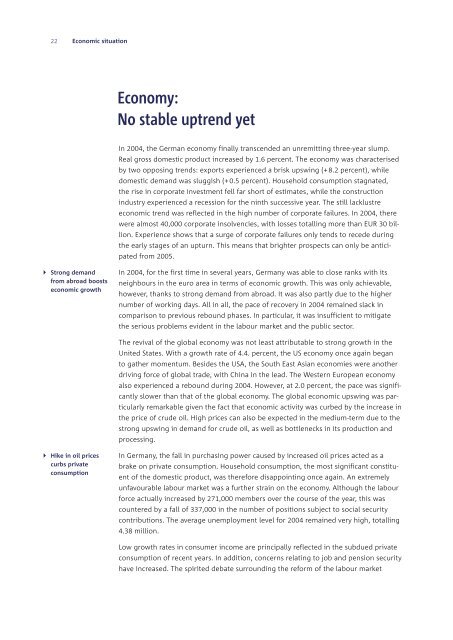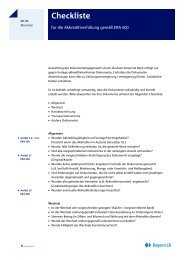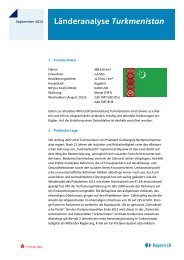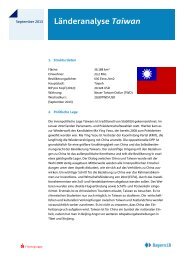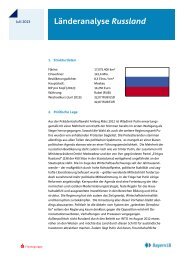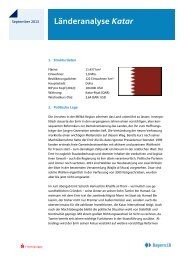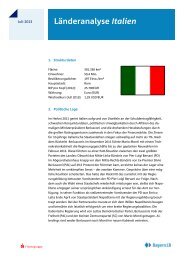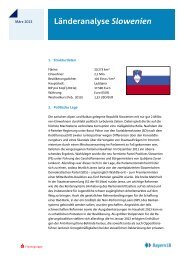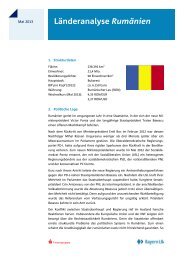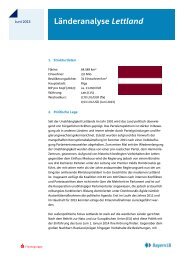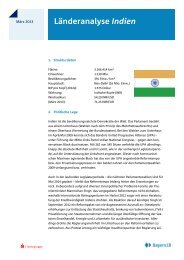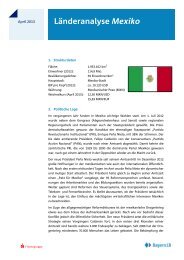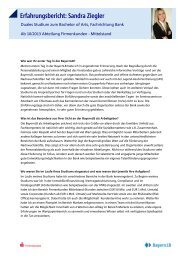A4 für Copyshop GB.indd - Bayerische Landesbank
A4 für Copyshop GB.indd - Bayerische Landesbank
A4 für Copyshop GB.indd - Bayerische Landesbank
Create successful ePaper yourself
Turn your PDF publications into a flip-book with our unique Google optimized e-Paper software.
22 Economic situation<br />
} Strong demand<br />
from abroad boosts<br />
economic growth<br />
} Hike in oil prices<br />
curbs private<br />
consumption<br />
Economy:<br />
No stable uptrend yet<br />
In 2004, the German economy finally transcended an unremitting three-year slump.<br />
Real gross domestic product increased by 1.6 percent. The economy was characterised<br />
by two opposing trends: exports experienced a brisk upswing (+ 8.2 percent), while<br />
domestic demand was sluggish (+ 0.5 percent). Household consumption stagnated,<br />
the rise in corporate investment fell far short of estimates, while the construction<br />
industry experienced a recession for the ninth successive year. The still lacklustre<br />
economic trend was reflected in the high number of corporate failures. In 2004, there<br />
were almost 40,000 corporate insolvencies, with losses totalling more than EUR 30 bil-<br />
lion. Experience shows that a surge of corporate failures only tends to recede during<br />
the early stages of an upturn. This means that brighter prospects can only be antici-<br />
pated from 2005.<br />
In 2004, for the first time in several years, Germany was able to close ranks with its<br />
neighbours in the euro area in terms of economic growth. This was only achievable,<br />
however, thanks to strong demand from abroad. It was also partly due to the higher<br />
number of working days. All in all, the pace of recovery in 2004 remained slack in<br />
comparison to previous rebound phases. In particular, it was insufficient to mitigate<br />
the serious problems evident in the labour market and the public sector.<br />
The revival of the global economy was not least attributable to strong growth in the<br />
United States. With a growth rate of 4.4. percent, the US economy once again began<br />
to gather momentum. Besides the USA, the South East Asian economies were another<br />
driving force of global trade, with China in the lead. The Western European economy<br />
also experienced a rebound during 2004. However, at 2.0 percent, the pace was signifi-<br />
cantly slower than that of the global economy. The global economic upswing was par-<br />
ticularly remarkable given the fact that economic activity was curbed by the increase in<br />
the price of crude oil. High prices can also be expected in the medium-term due to the<br />
strong upswing in demand for crude oil, as well as bottlenecks in its production and<br />
processing.<br />
In Germany, the fall in purchasing power caused by increased oil prices acted as a<br />
brake on private consumption. Household consumption, the most significant constitu-<br />
ent of the domestic product, was therefore disappointing once again. An extremely<br />
unfavourable labour market was a further strain on the economy. Although the labour<br />
force actually increased by 271,000 members over the course of the year, this was<br />
countered by a fall of 337,000 in the number of positions subject to social security<br />
contributions. The average unemployment level for 2004 remained very high, totalling<br />
4.38 million.<br />
Low growth rates in consumer income are principally reflected in the subdued private<br />
consumption of recent years. In addition, concerns relating to job and pension security<br />
have increased. The spirited debate surrounding the reform of the labour market


